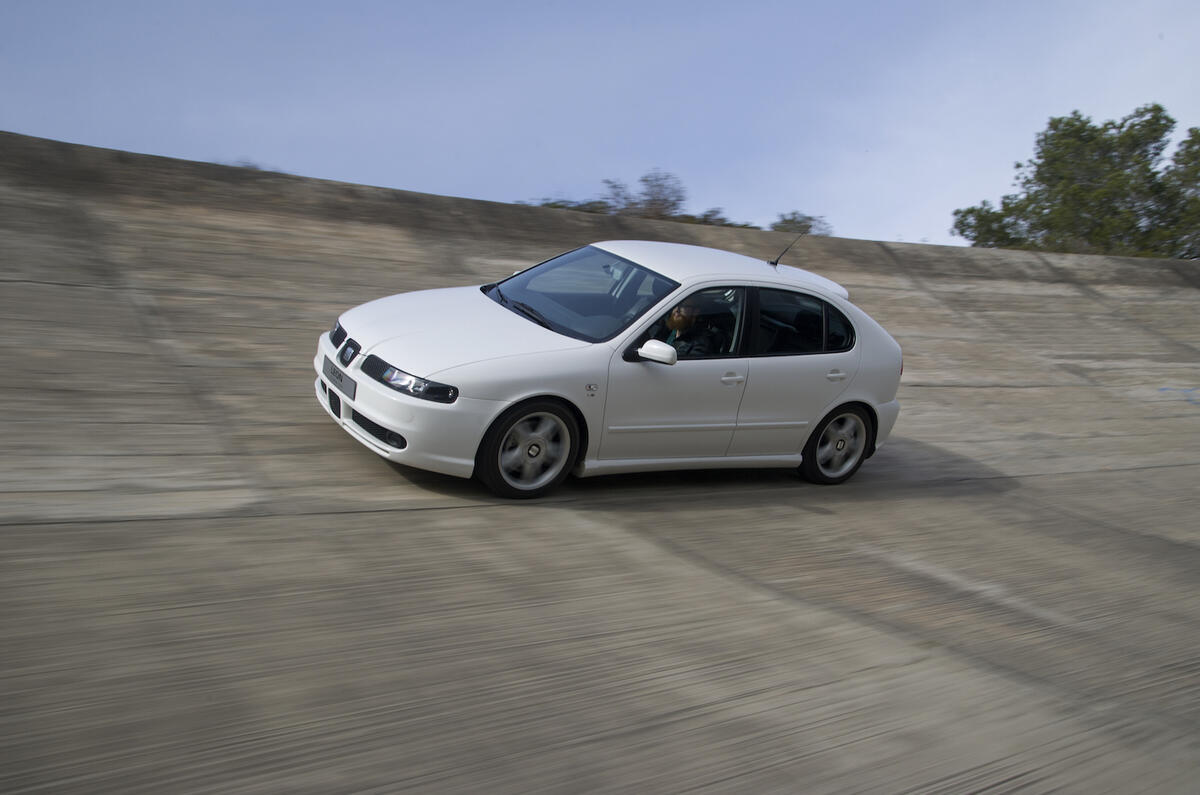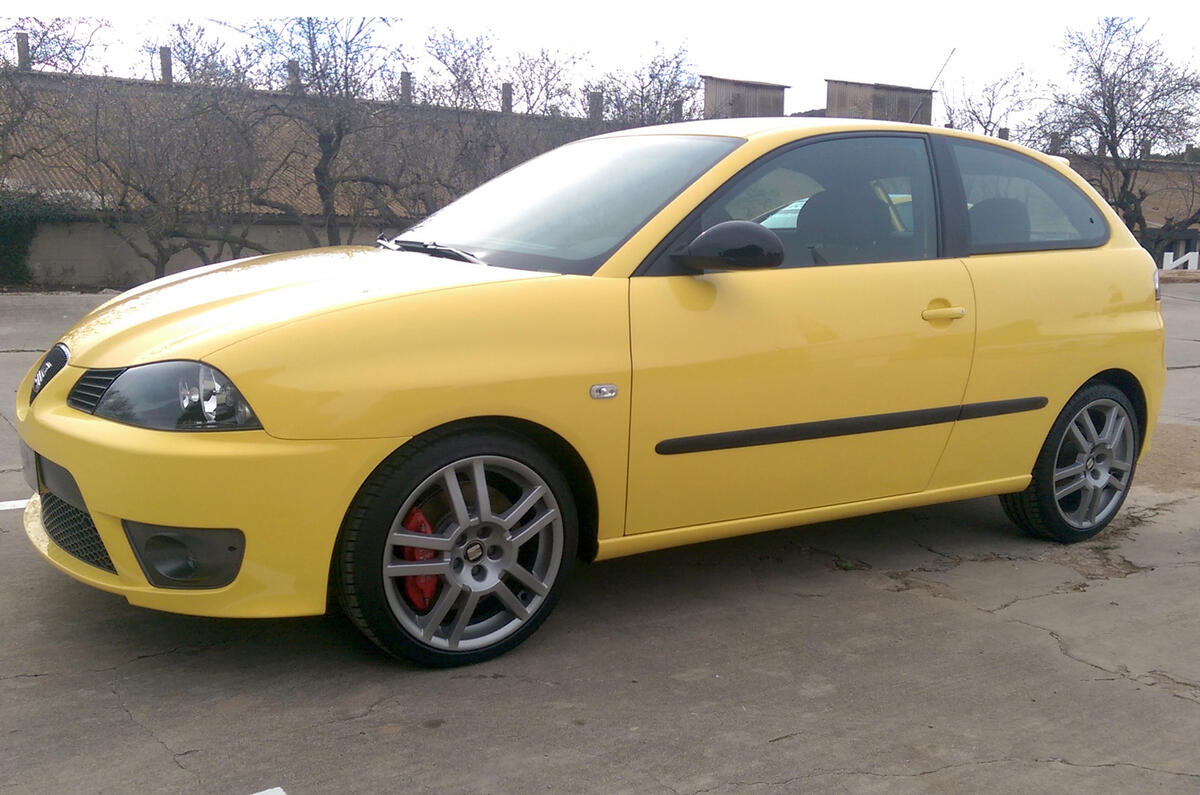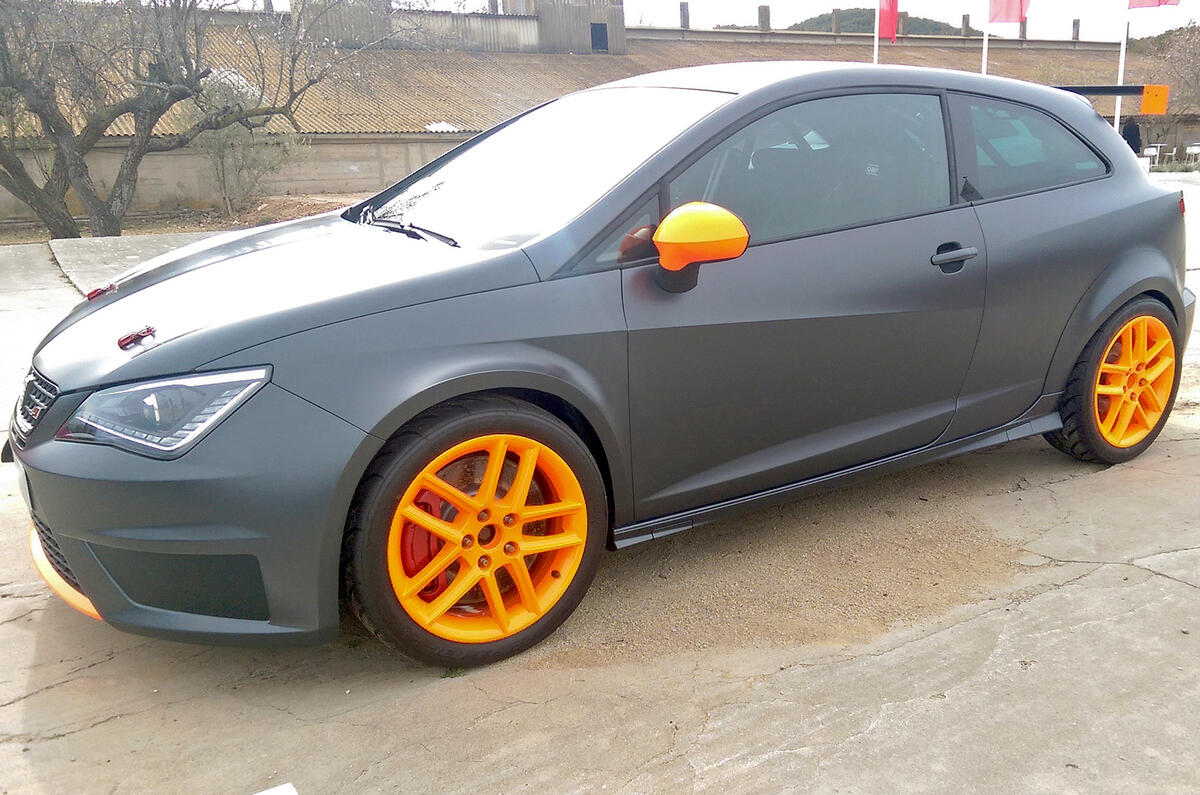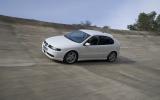Although Seat has been active in motorsport for well over 40 years, it’s only in the past 20 that you’ve been able to purchase a swift Spaniard for the road. The story begins with the Ibiza Cupra, a car that was developed alongside the Ibiza Kit-Car that won the World Rally Championship for F2-spec cars.
While the Ibiza was based on the same architecture as the Volkswagen Polo, it shared the same 148bhp 2.0-litre engine as the Mk3 Golf GTI 16v. With just over 1100kg to push around, it could crack 62mph from rest in a brisk 8.3sec. It was a good package, and the Ibiza rally car would go on to win three world titles for Seat.
Four years later, the Ibiza Cupra R was launched. Based on the same platform, it ditched the old naturally aspirated 2.0-litre engine for a 1.8-litre turbocharged lump taken from the larger Leon 1.8VT. Power was up to 178bhp and the 0-62mph time down to just 7.2sec, setting the scene for more rapid Cupra models.
It wasn’t just the Ibiza getting a Cupra work-over, however. In 2000 the first Leon Cupra was introduced, a car that didn't come to the UK. Instead of a 1.8-litre turbo, there was a 201bhp 2.8-litre V6 coupled to a four-wheel drive transmission.
One of these was available for brief drives around the banked circuit at Sitges-Terramar on the recent Seat Leon Cupra 290 launch. From the outside it looked like it had just rolled off the production line, and the interior wasn’t too far off either.
Jumping inside revealed a cabin that was a real blast from the past. Gone were the multitude of colour displays and electronic assistants that are so common in modern cars. A quick turn of the key fired up the V6 to a mellow, unmistakably six-cylinder idle.
Barely a tickle of throttle was needed to get the Leon moving, and it soon becoming clear that this was a very flexible engine. While the 7.3sec 0-62mph time is nothing special now, it still felt brisk, even just surfing the midrange.
Comfort was also surprisingly good, even on the old circuit's rough concrete banking. The 17in wheels may have seemed massive back in the day, but nowadays the sidewall profile seems somewhat generous. Turn-in wasn't the crispest but it seemed like a decent little car with a big heart.
From this point, Seat settled into a familiar pattern that was started with the Ibiza Cupra R: turbocharged four-pot up front with front-wheel drive and plenty more power than its predecessor. This was cemented by the 2002 Leon Cupra R, which ditched the V6 for a 221bhp version of the 1.8-litre turbo. Not only was it more powerful, but dropping the four-wheel drive also reduced weight significantly, so the 0-62mph time was down to 6.9sec.

































Join the debate
Add your comment
Similar to the Renault Megane